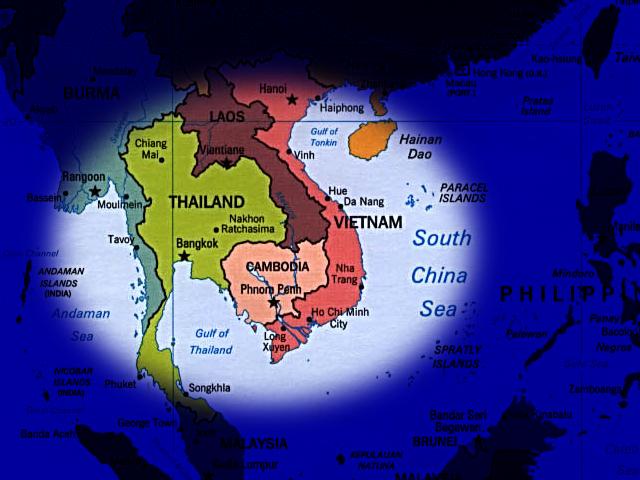On Friday, firing between Thai and Cambodian militaries erupted killing 4 and displacing more than 3000. The animosity between the two dates several decades, yet both have found a way to cooperated economically despite occasional flare-ups. May be others, like India-Pakistan or Israel-Palestine, can learn something from the Thai-Cambodian model.

The exchange of small-arms and artillery fire that had been going between Thai and Cambodian forces, which had been going on for the last two days, has finally been called off. Fighting over a 4.6-sq-km disputed area around the 900-year-old Preah Vihear temple, which is claimed by both countries, cost four lives. Additionally, the Thai Government has evacuated over 3000 villagers in the surrounding area. Preah Vihear Hindu temple is considered to be one of the finest of the Khmer Civilization ruins. The skirmishes comes day after two Thais were convicted by a Cambodian court of spying.
Tension between the two neighbours is nothing new. Over the last few decade violence and cross-border firing has become a regular occurrence. It is usually followed by song-and-dance agreements, claiming return to normalcy. However, the tensions always remain high between the two and violence can be expected to breakout any time. In fact, in 2003, when a Cambodian newspaper falsely accused a Thai actress of having said that Cambodian national treasure Angkor Wat should rightfully belong to Thailand, anger that erupted in Cambodia ended up with the burning down of Thai Embassy. Thai Government had to threaten Cambodia with military action to get Cambodian Government to stop the protests.
Yet, the two countries have somehow found a way to cooperate despite all the bad blood. Thailand is the biggest exporter to Cambodia (25%) and trade between the two economies actually grew by 50% in the year 2009-2010. Both countries regularly encourage their businesses to do cross-border trade. Moreover, their hatred for each other has not completely derailed Association of Southeast Asian Nations (ASEAN,) a multilateral forum in the lines of European Union involving the ten Southeast Asian countries. ASEAN has been so successful that it plans to create a joint stock market for all the ten countries by the end of 2011.
Other neighbour rivalries around the world have not been so successful. SAARC – South Asian Association for Regional Cooperation - has been completely wrecked due to Indo-Pakistan rivalry. Israel and Palestine have hardly ever been at speaking terms with each other. And while South Korea has now started to attempt to engage North Korea economically, it still has a long way to go before any substantial results.
May be other international rivalries should take a page from their Southeast Asian counterpart and see if economics (read money) can minimize, if not remove, the traditional ego issues between the rivals.























No comments:
Post a Comment